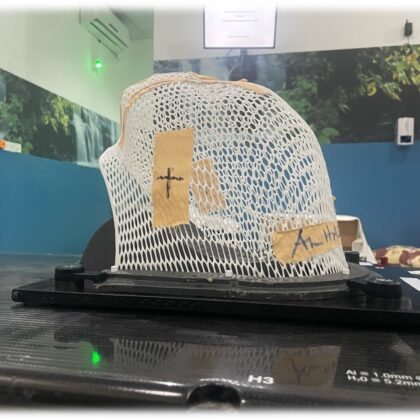Everything you wanted to know about Monte-Carlo techniques but were afraid to ask…
In recent years, the application of Monte Carlo (MC) techniques in radiotherapy has garnered significant attention due to their unparalleled accuracy in dose calculation and treatment planning. These stochastic methods simulate the complex interactions of particles with matter, providing detailed insights that enhance the precision of radiation treatments. At JRP we have seen a dramatic increase in the number of submissions related to applications of Monte-Carlo methods and were delighted that Andrew Fielding agreed to write 2 comprehensive reviews providing an in-depth exploration of the current state and emerging applications of MC techniques in this field. These provide a great starting point to our “Collection” of Monte-Carlo articles which you can find on the journal website.
An Overview of Monte Carlo Techniques in Radiotherapy
Fielding’s first article provides a thorough introduction to MC methods, highlighting their evolution and the various codes available for radiotherapy simulations. These codes empower clinicians and researchers to model complex treatment scenarios, ensuring that dose distributions are accurately represented even in challenging anatomical regions. The review summarises several open-source and supported MC codes that have been widely adopted in the field and outlines the main benefits of using these complex simulations. The accuracy of dose calculations is paramount in radiotherapy, directly influencing treatment efficacy and patient safety. Traditional algorithms, while efficient, often rely on approximations that may not capture the intricacies of particle interactions within heterogeneous tissues. MC simulations address this limitation by modelling the probabilistic nature of radiation transport, thereby serving as the gold standard for absorbed dose calculations.
Emerging Applications of Monte Carlo Techniques
Building upon the foundational aspects, Fielding’s second article delves into specific applications of MC simulations in radiotherapy. One prominent area is the modelling of radiotherapy and imaging beam production. By simulating the behaviour of radiation beams, MC methods facilitate the optimization of beam parameters, leading to improved treatment efficacy and reduced exposure to healthy tissues. In brachytherapy, where radioactive sources are placed close to or within the tumour, MC simulations play a crucial role in source modelling and dose calculations, thereby enhancing treatment planning accuracy. Beyond treatment simulation, MC techniques are instrumental in phantom and patient dosimetry as well as detector modelling. Additionally, MC methods contribute to track structure calculations for micro-dosimetry, nano-dosimetry, and radiobiology.
Challenges and Future Directions
With such a wide range of uses, it is unsurprising that the body of evidence concerning MC techniques is expanding so rapidly. Advancements in computing power, the emerging integration of artificial intelligence (AI) with MC simulations and the application of MC techniques in emerging radiotherapy modalities, such as proton and heavy ion therapy, are such promising area of research. For those interested in exploring this topic further, Fielding’s articles provide a very accessible, yet comprehensive starting point, with plenty more to be found in our Monte Carlo Collection on the JRP website.

Fielding, A. L. (2023). Monte-Carlo techniques for radiotherapy applications I: introduction and overview of the different Monte-Carlo codes. Journal of Radiotherapy in Practice, 22, e80.
Fielding, A. L. (2023). Monte-Carlo techniques for radiotherapy applications II: equipment and source modelling, dose calculations and radiobiology. Journal of Radiotherapy in Practice, 22, e81.






